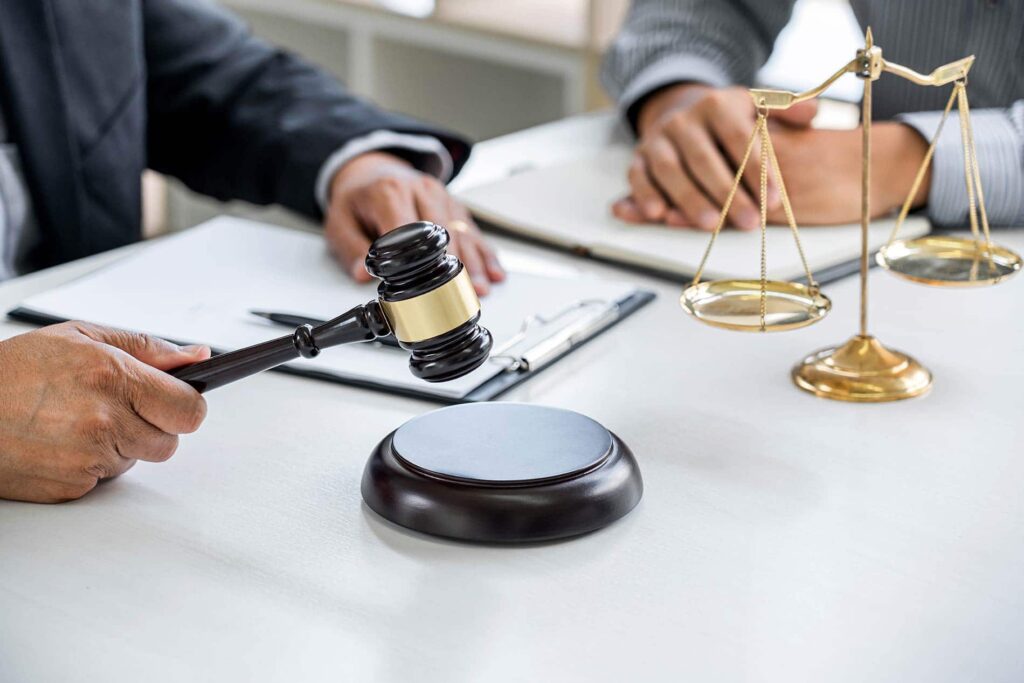The conveyancing process can be a complex and daunting journey for many property buyers and sellers. From the initial contract agreement to the final transfer of keys, there are numerous steps and legal requirements that must be followed. However, with a clear understanding of the basics of conveyancing and the role of a conveyancer, as well as some tips for a smooth process, you can navigate this process with confidence. In this article, we will explore all of these aspects in detail.
Understanding the Basics of Conveyancing
Conveyancing is a fundamental aspect of the real estate industry, serving as the legal process that facilitates the transfer of property ownership from one party to another. Conveyancing Melbourne encompasses a series of intricate steps that must be meticulously followed to ensure a smooth and legally valid transaction.
What is Conveyancing?
Conveyancing involves a comprehensive range of tasks and responsibilities, all aimed at safeguarding the interests of both the buyer and the seller. It encompasses the preparation, execution, and lodgement of various legal documents, as well as the verification and fulfillment of all legal requirements.
One of the primary objectives of conveyancing is to establish a clear and unambiguous transfer of property rights. This includes conducting thorough research on the property to identify any potential issues or encumbrances that may affect its value or ownership. By addressing these concerns, conveyancing ensures that the buyer receives a property free from any undisclosed burdens or liabilities.
Importance of Conveyancing in Property Transactions
Property transactions are significant financial investments, and the importance of conveyancing cannot be overstated. This meticulous process serves as a protective shield for both buyers and sellers, ensuring that their rights and obligations are properly documented and upheld.

For buyers, conveyancing provides a comprehensive examination of the property’s legal status, confirming that the seller has the legal right to transfer ownership. This includes verifying the authenticity of the title deeds, investigating any existing mortgages or liens, and assessing any potential planning or zoning restrictions that may impact the property’s use.
On the other hand, sellers benefit from conveyancing by ensuring that all necessary legal documents are prepared accurately and in compliance with applicable laws and regulations. This includes drafting the contract of sale, preparing the necessary transfer documents, and facilitating the settlement process.
Moreover, conveyancing also plays a pivotal role in protecting both parties from potential disputes or legal complications that may arise during or after the transaction. By conducting thorough due diligence and ensuring that all legal requirements are met, conveyancers minimize the risk of future legal battles and provide peace of mind to all parties involved.
In conclusion, conveyancing is an essential component of property transactions, serving as the legal backbone that ensures a smooth and secure transfer of ownership. Its intricate processes and meticulous attention to detail provide buyers and sellers with the confidence and assurance they need to navigate the complex world of real estate.
The Role of a Conveyancer
A conveyancer plays a crucial role in the property buying and selling process. They are licensed professionals who specialize in property law and are responsible for guiding clients through the complex and often daunting process of conveyancing. While their primary focus is on legal matters, their role extends beyond just paperwork.
One of the key duties of a conveyancer is conducting property searches. This involves thoroughly investigating the property to ensure that there are no hidden issues or legal complications. They will examine various documents, such as title deeds, planning permissions, and environmental reports, to provide a comprehensive picture of the property’s history and any potential risks.
Once the property searches are completed, the conveyancer moves on to preparing the necessary legal documents. This includes drafting contracts, transfer deeds, and other relevant paperwork. Accuracy and attention to detail are crucial at this stage to ensure that all legal requirements are met and that the interests of their clients are protected.
In addition to the legal aspects, a conveyancer also plays a vital role in facilitating the settlement process. They liaise with various parties involved, such as the buyer, seller, real estate agents, and mortgage lenders, to coordinate the smooth transfer of ownership. This involves arranging for the payment of funds, ensuring that all necessary documents are signed, and overseeing the registration of the property with the appropriate authorities.
Duties and Responsibilities of a Conveyancer
As mentioned earlier, the duties and responsibilities of a conveyancer go beyond just paperwork. They act as a trusted advisor and advocate for their clients, providing guidance and support throughout the entire conveyancing process. This includes explaining complex legal terms and concepts in a way that is easily understandable to their clients.
Furthermore, a conveyancer must stay up-to-date with the latest changes in property law and regulations. This ensures that they can provide accurate and relevant advice to their clients, helping them make informed decisions. They may also need to interpret and apply local planning and zoning regulations to ensure compliance.
Another important aspect of a conveyancer’s role is managing the financial aspects of the transaction. They calculate and advise their clients on the various costs involved, such as stamp duty, legal fees, and disbursements. They also ensure that all financial transactions are conducted securely and in accordance with legal requirements.
Throughout the conveyancing process, a conveyancer must maintain clear and timely communication with their clients. They should be readily available to answer any questions or concerns and provide regular updates on the progress of the transaction. Effective communication is essential to build trust and ensure a smooth and successful outcome.

Choosing the Right Conveyancer for You
When it comes to selecting a conveyancer, it is crucial to consider several factors to ensure that you choose the right professional for your needs. Experience is one of the key factors to consider. Look for a conveyancer who has a solid track record in handling similar transactions and has a good understanding of the local property market.
Reputation is another important consideration. Seek recommendations from friends, family, or trusted professionals who have recently gone through the conveyancing process. Online reviews and testimonials can also provide valuable insights into the quality of service provided by a conveyancer.
Communication skills are vital when choosing a conveyancer. You want someone who can explain complex legal matters in a clear and understandable manner. They should be responsive to your queries and keep you informed at every step of the process.
Finally, consider the conveyancer’s fees and charges. While cost should not be the sole determining factor, it is essential to have a clear understanding of the fees involved upfront. Compare quotes from different conveyancers and ensure that you are getting a fair and transparent pricing structure.
By carefully considering these factors, you can choose a conveyancer who will provide you with the necessary expertise, support, and peace of mind throughout the conveyancing process.
Steps in the Conveyancing Process
The conveyancing process is a crucial aspect of buying or selling a property. It involves various stages that must be carefully navigated to ensure a smooth and successful transaction. Let’s take a closer look at each stage:
Pre-Contract Stage
The pre-contract stage is where the groundwork for the conveyancing process begins. It is a critical phase that involves several important steps:
- Property Inspections: Before entering into a contract, it is essential to conduct thorough inspections of the property. This includes assessing the condition of the building, checking for any structural issues, and examining the land for potential problems.
- Finance Approval: Obtaining finance approval is a crucial step in the pre-contract stage. Buyers need to secure the necessary funds to complete the purchase, and sellers need to ensure the buyer’s financial capability.
- Contract Negotiation: Negotiating the terms and conditions of the contract is a vital part of the pre-contract stage. This includes determining the purchase price, settlement date, and any special conditions that need to be included.
- Conveyancer’s Role: Engaging a conveyancer at this stage is highly advisable. They can assist with the preparation and review of the contract, ensuring that all legal requirements are met and protecting your interests throughout the process.
Post-Contract Stage
Once the contract is signed, the conveyancing process moves into the post-contract stage. This phase involves various tasks to ensure a smooth transition towards settlement:
Searches and Investigations:
The conveyancer will conduct thorough searches and investigations to identify any potential legal or financial issues that may affect the property. This includes checking for outstanding debts, easements, encumbrances, and any other relevant information.
Building and Pest Inspections:
In addition to the pre-contract property inspections, it is common for buyers to arrange for building and pest inspections during the post-contract stage. These inspections provide a detailed assessment of the property’s structural integrity and identify any pest-related issues.
Contractual Obligations:
During this stage, both the buyer and seller must fulfill their contractual obligations. This includes providing necessary documentation, meeting deadlines, and addressing any concerns or issues that may arise.
Conveyancer’s Role:
The conveyancer plays a crucial role in guiding their clients through the post-contract stage. They ensure that all necessary searches and investigations are conducted, and any potential issues are addressed promptly to avoid complications during settlement.

Completion and Post-Completion Stage
The completion stage marks the finalization of the sale and the transfer of ownership from the seller to the buyer. It involves the following key steps:
Settlement Coordination:
The conveyancer takes charge of coordinating the settlement process. This includes liaising with the buyer’s and seller’s representatives, arranging for the transfer of funds, and ensuring all necessary documentation is prepared.
Property Registration:
Once settlement is complete, the conveyancer will facilitate the registration of the property under the new owner’s name. This involves lodging the necessary documents with the relevant government authority.
Post-Completion Matters:
After completion, there are still a few matters that need to be addressed. The conveyancer will handle tasks such as notifying the local council about the change of ownership for council rates and arranging for the transfer of utility services.
Finalizing the Process:
While the completion stage marks the end of the conveyancing process, there may still be some loose ends to tie up. The conveyancer will ensure that all necessary documentation is provided to the buyer and seller, and any outstanding matters are resolved.
By understanding the various stages of the conveyancing process, you can navigate through the complexities involved in buying or selling a property with confidence. Remember, engaging a knowledgeable and experienced conveyancer can greatly simplify the process and provide you with peace of mind.
Common Challenges in the Conveyancing Process
Delays in the Conveyancing Process
Delays can occur due to factors such as incomplete documentation, issues with financing, or disputes between the parties involved. Having an experienced conveyancer can help mitigate these challenges and keep the process on track.
Dealing with Legal Issues
Legal issues can arise during conveyancing, such as encumbrances, easements, or zoning restrictions. A conveyancer will identify these issues and advise on how to address them, ensuring that your rights as a buyer or seller are protected.
Tips for a Smooth Conveyancing Process
Preparing Your Documents
One of the keys to a smooth conveyancing process is being well-prepared. Ensure you have all the necessary documents, such as identification, property title deeds, and relevant financial information, readily available for your conveyancer.
Communicating Effectively with Your Conveyancer
Open and transparent communication with your conveyancer is essential. Stay in regular contact, promptly respond to requests for information or documentation, and seek clarification whenever needed. This will help ensure that any potential issues are identified and addressed promptly.In conclusion, navigating the conveyancing process requires an understanding of the basics, the involvement of a knowledgeable conveyancer, and attention to detail. By following these guidelines and taking advantage of the assistance available, you can confidently proceed from contract to keys in your property transaction.
More to read: The Importance of Online Wills and How to Create Yours
